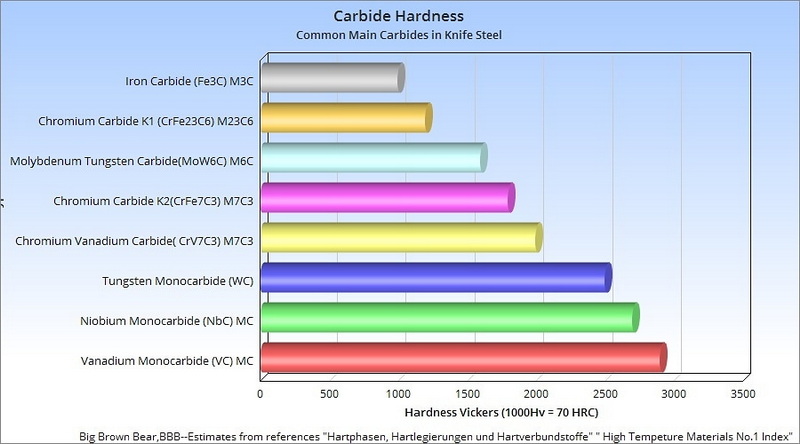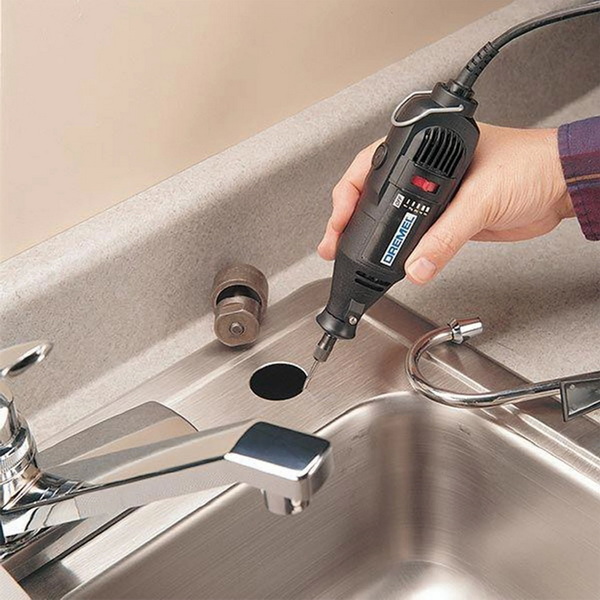Content Menu
● What Defines a Network Solid?
>> Key Properties of Network Solids
● Atomic Structure of Tungsten Carbide
>> 1. Hexagonal (α-WC) Structure
>> 2. Cubic (β-WC) Structure
>> Bonding Characteristics: Covalent vs. Metallic
● Physical and Chemical Properties
>> Thermal and Chemical Stability
● Synthesis and Manufacturing
>> 1. Powder Production
>> 2. Sintering
● Applications Leveraging Network Structure
>> 1. Cutting and Drilling Tools
>> 2. Wear-Resistant Coatings
>> 3. High-Temperature Components
>> 4. Consumer Products
● Comparative Analysis: WC vs. Other Network Solids
>> Similarities
>> Differences
● Conclusion
● FAQ
>> 1. Is tungsten carbide a ceramic or a metal?
>> 2. Why does tungsten carbide conduct electricity despite being a network solid?
>> 3. How does tungsten carbide's hardness compare to diamond?
>> 4. What industries rely most on tungsten carbide?
>> 5. How is tungsten carbide synthesized?
● Citations:
Tungsten carbide (WC) is a ceramic compound renowned for its extraordinary hardness, high melting point, and industrial versatility. Its unique atomic structure and bonding characteristics have sparked debates about its classification as a network solid. This article explores its structural properties, compares it to classic network solids like diamond, examines its synthesis methods, and addresses common questions about its behavior and applications.
What Defines a Network Solid?
Network solids, also called covalent network solids, are materials where atoms are interconnected by covalent bonds in a continuous three-dimensional lattice. These structures lack discrete molecules and exhibit high melting points, rigidity, and poor electrical conductivity due to localized electrons. Classic examples include:
- Diamond: A tetrahedral carbon lattice (Figure 1a).
- Quartz (SiO₂): A framework of silicon-oxygen tetrahedra.
- Silicon Carbide (SiC): A diamond-like structure with alternating silicon and carbon atoms.
Key Properties of Network Solids
- High melting points (e.g., diamond sublimes at 3,500°C).
- Exceptional hardness due to rigid covalent bonds.
- Low electrical conductivity (except graphite, which has delocalized π-electrons).
- Brittle nature with minimal plastic deformation under stress.
Atomic Structure of Tungsten Carbide
Tungsten carbide crystallizes in two primary forms, with distinct bonding patterns:
1. Hexagonal (α-WC) Structure
The thermodynamically stable α-phase adopts a simple hexagonal lattice (Figure 1b):
- Tungsten atoms form close-packed layers.
- Carbon atoms occupy 50% of the trigonal prismatic interstices, creating a WC ratio of 1:1.
- Each tungsten atom bonds covalently to six carbon neighbors (bond length: 220 pm).
This arrangement resembles a 3D covalent network, akin to diamond but with alternating metal-carbon layers.
2. Cubic (β-WC) Structure
The metastable β-phase has a rock salt (NaCl) structure:
- Tungsten and carbon atoms occupy alternating face-centered cubic positions.
- This phase forms above 2,500°C but rapidly converts to α-WC upon cooling.
Bonding Characteristics: Covalent vs. Metallic
While covalent bonds dominate in α-WC, subtle metallic traits emerge:
- Partial electron delocalization: Overlapping d-orbitals of tungsten allow limited electron mobility, yielding electrical resistivity (~0.2 μΩ·m) closer to metals than ceramics.
- Ductility in composites: Pure WC is brittle, but adding cobalt (Co) binders enables plastic deformation under stress.
Physical and Chemical Properties
Tungsten carbide exhibits a blend of ceramic and metallic properties:
| Property | Tungsten Carbide | Diamond | Steel (AISI 1045) |
| Hardness (Mohs) | 9.0–9.5 | 10 | 4–4.5 |
| Melting Point (°C) | 2,870 | 3,500 (sublimes) | 1,425–1,520 |
| Electrical Resistivity (μΩ·m) | 0.2 | ~10⊃1;⊃2; | 0.15 |
| Thermal Conductivity (W/m·K) | 110 | 900–2,300 | 50 |
| Compressive Strength (GPa) | 6.76 | 110 | 0.25–0.35 |
Thermal and Chemical Stability
- Oxidation resistance: Stable in air up to 500–600°C; forms WO₃ and CO₂ above 600°C.
- Acid resistance: Inert to hydrochloric and sulfuric acids but dissolves in HF/HNO₃ mixtures.

Synthesis and Manufacturing
Tungsten carbide is synthesized in two stages:
1. Powder Production
- Direct carburization: Tungsten powder reacts with carbon black at 1,400–2,000°C:
W+CΔWC
- Gas-phase methods: Chemical vapor deposition (CVD) creates ultra-fine WC powders for coatings.
2. Sintering
Powders are mixed with cobalt (3–30 wt.%) and sintered at 1,300–1,500°C to form dense composites (Figure 2). Cobalt acts as a binder, filling gaps between WC grains and enhancing toughness.
Applications Leveraging Network Structure
Tungsten carbide's covalent lattice underpins its industrial dominance:
1. Cutting and Drilling Tools
- WC-Co composites dominate the machining industry.
- Superior wear resistance enables high-speed cutting of alloys and composites (Figure 3).
2. Wear-Resistant Coatings
- High-velocity oxygen fuel (HVOF) spraying deposits WC-Co coatings on aerospace components.
- Diamond-like carbon (DLC) coatings with WC nanoparticles enhance automotive engine parts.
3. High-Temperature Components
- Rocket nozzle liners: WC's thermal stability withstands propulsion exhaust (>2,000°C).
- Nuclear reactor shields: WC-B₄C composites block neutron radiation.
4. Consumer Products
- Jewelry: Sintered WC rings resist scratches better than platinum or gold.
- Sporting goods: WC-tipped golf clubs and bicycle pedals improve durability.
Comparative Analysis: WC vs. Other Network Solids
Similarities
- 3D covalent bonding defines structural integrity.
- High hardness resists plastic deformation.
Differences
- Electrical conductivity: WC conducts electricity; diamond and quartz do not.
- Fracture toughness: WC-Co composites (10–20 MPa√m) surpass diamond (5–10 MPa√m).
Conclusion
Tungsten carbide qualifies as a network solid due to its interconnected covalent lattice. However, its metallic-level electrical conductivity and adaptability in composite form challenge traditional ceramic classifications. These dual traits—rooted in its atomic structure and manufacturing innovations—make it indispensable in industries demanding extreme durability and precision.

FAQ
1. Is tungsten carbide a ceramic or a metal?
Tungsten carbide is a ceramic with covalent bonding. However, it's often combined with metallic binders like cobalt to form cermets, which exhibit hybrid properties.
2. Why does tungsten carbide conduct electricity despite being a network solid?
Its hexagonal lattice allows partial electron delocalization, similar to graphite. The overlap of tungsten's d-orbitals facilitates electron mobility, yielding resistivity akin to metals.
3. How does tungsten carbide's hardness compare to diamond?
WC (Mohs 9.0–9.5) is slightly softer than diamond (Mohs 10) but harder than corundum (sapphire/ruby).
4. What industries rely most on tungsten carbide?
Mining, aerospace, and manufacturing use WC for cutting tools, wear-resistant coatings, and high-temperature components.
5. How is tungsten carbide synthesized?
WC powder is produced via direct carburization of tungsten metal at 1,400–2,000°C. Sintering with cobalt binders creates dense composites.
Citations:
[1] https://en.wikipedia.org/wiki/Tungsten_carbide
[2] https://www.vedantu.com/chemistry/tungsten-carbide
[3] https://scienceinfo.com/tungsten-carbide-properties-applications/
[4] https://www.istockphoto.com/photos/tungsten-carbide
[5] http://www.chinatungsten.com/Tungsten-Carbide/Properties-of-Tungsten-Carbide.html
[6] https://www.linde-amt.com/resource-library/articles/tungsten-carbide
[7] https://www.refractorymetal.org/tungsten-carbide-uses-properties.html
[8] https://www.freepik.com/free-photos-vectors/tungsten-carbide
[9] https://en.wikipedia.org/wiki/File:-Alpha_tungsten_carbide_crystal_structure.jpg
[10] https://lodricrouxmatsci.wordpress.com/35-2/
[11] https://www.doubtnut.com/qna/12974648
[12] http://www.tungsten-carbide.com.cn
[13] https://periodictable.com/Elements/074/pictures.html















